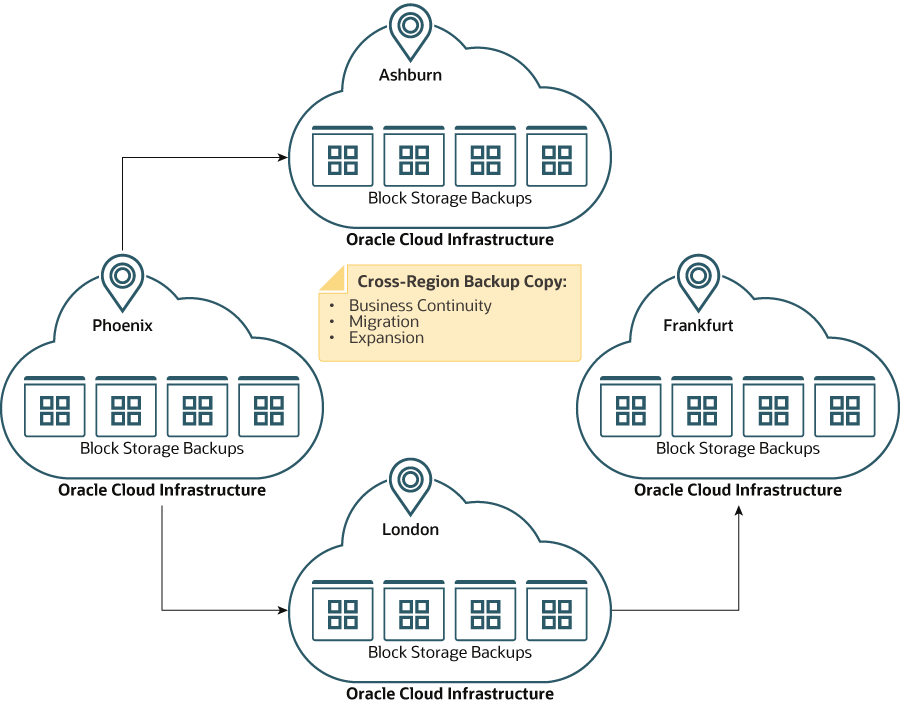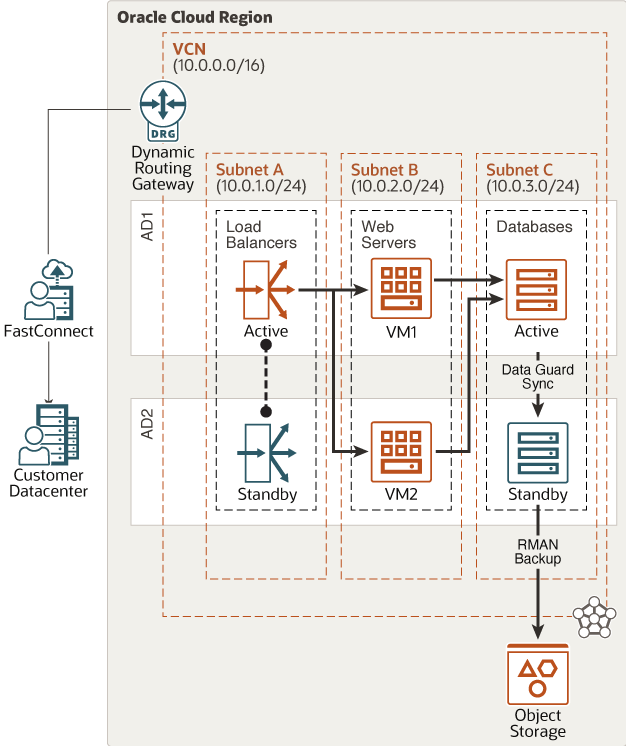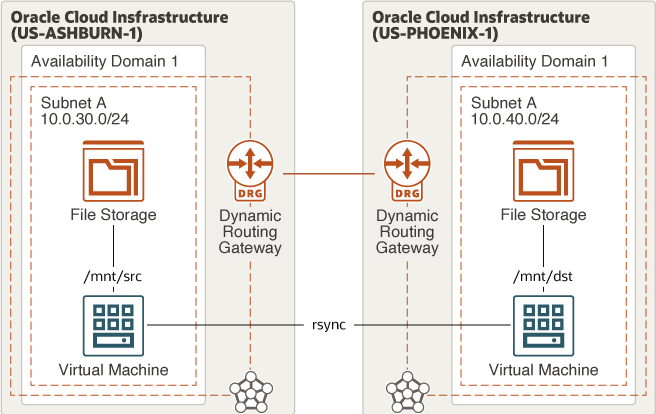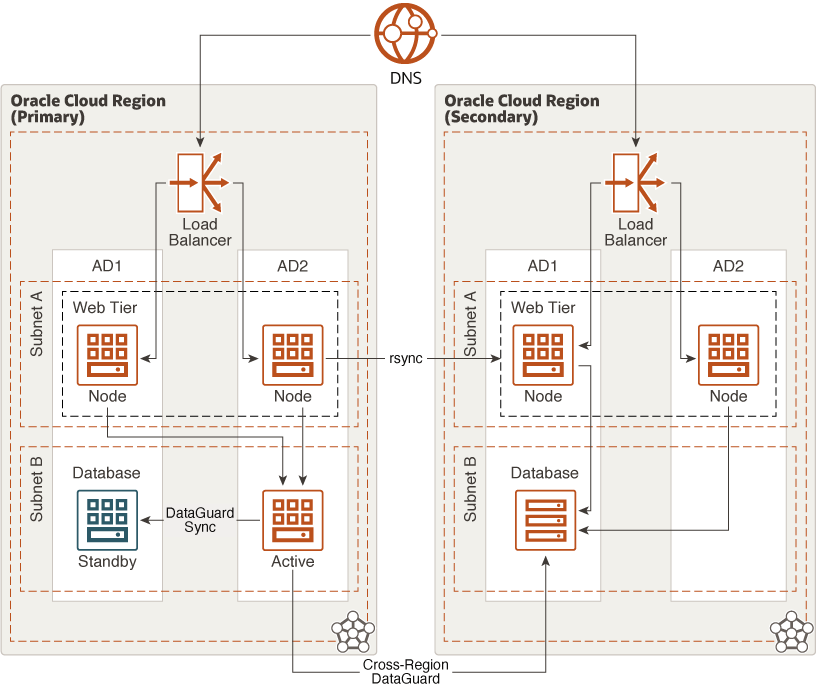Determine Your Deployment Strategy
To protect your applications from disasters, you must determine a deployment strategy based on your RTO and RPO requirements.
Regions with a Single Availability Domain
In regions that have a single availability domain, you can deploy applications across multiple fault domains to protect them from unexpected hardware failures or planned outages for hardware maintenance.
A fault domain is a grouping of hardware and infrastructure that is distinct from other fault domains in the same availability domain. Each availability domain has three fault domains. By properly using fault domains, you can increase the availability of applications running on Oracle Cloud Infrastructure.
- Scenario 1: Highly Available Application Architecture
In this scenario, you have a highly available application—for example, two web servers and a clustered database. Group one web server and one database node in one fault domain, and group the other half of each pair in another fault domain. This configuration ensures that a failure of any one fault domain doesn’t result in an outage for your application.
- Scenario 2: Single Web Server and Database Instance Architecture
In this scenario, your application architecture is not highly available—for example, you have one web server and one database instance. Place both the web server and the database instance in the same fault domain. This configuration ensures that your application is impacted only by the failure of that single fault domain.
However, this deployment doesn't provide protection if the entire availability domain experiences a failure. For an effective DR solution in a region with one availability domain, we recommend replication to a remote region.
For example, you can back up block volumes to remote regions that are distinct from the primary operating region. By copying block volume backups to another region at regular intervals, you can rebuild applications and their associated data in the remote region without significant data loss if a disaster impacts the primary region. The volume backup in the remote region can be restored and accessed by new instances to restore application functionality in the new region.

Description of the illustration cross-region-backup.png
Regions with Multiple Availability Domains
If your region has multiple availability domains, you can deploy your applications across multiple availability domains to protect against potential failures in a single availability domain.
We recommend using the Oracle Cloud Infrastructure Load Balancing service to minimize the downtime to your applications. If your application stack contains a database component, we recommend deploying a standby DB system in a different availability domain from your primary database and setting up Data Guard between them. We also recommend setting up your database backup to Oracle Cloud Infrastructure Object Storage to further protect your application data.

Description of the illustration single-region-3tier.png
Note that a single-region deployment doesn’t provide full protection if the entire region experiences a failure.
Cross-Region Deployments
For mission critical applications that require regional disaster recovery protection, you can use a cross-region DR topology. Oracle Cloud Infrastructure provides robust and high-performance backbones between cloud regions. You can use remote VCN peering to establish secure and reliable connections between different VCNs across regions.
For example, to accomplish cross-regional data protection, you can use rsync to asynchronously copy your file system or snapshot
data to another region. 
Description of the illustration cross-region-rsync.png

Description of the illustration dual-region-3tier.png
Note:
The architecture shows multiple availability domains (ADs). For a region that has a single AD, adjust the architecture to distribute your resources across the fault domains within the AD.Each of the web tier nodes communicates with one of the database nodes. Oracle Cloud Infrastructure supports RAC and Exadata; so you can get high availability even within a single availability domain. If a localized failure occurs in the database, Active Data Guard is used to synchronize to an equivalent database in the other availability domain within the region or across regions.